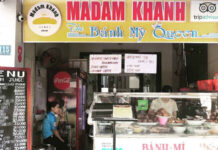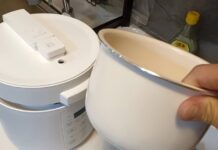Effective Supermarket Marketing Techniques
Supermarkets strategically employ various marketing techniques to entice customers and increase sales. One common tactic is the creation of visually striking discount tables, designed to give the impression of significant savings and motivate customers to purchase additional items.

Supermarkets are using enticing promotions to lure customers
The Power of Scents: Grilled Products
Imagine walking past a store and being greeted by the mouth-watering aroma of grilled meat. Stepping inside, you are faced with a display of delicious and appealing grilled dishes. These irresistible smells and enticing visual displays are designed to make customers purchase more, even exceeding their budget.

Customers are tempted by the delicious grilled dishes for sale
Crafty Store Layouts
Supermarkets employ strategic layouts to influence customer behavior. For example, when customers purchase roasted chicken, they are guided through various other sections before reaching the bread aisle, tempting them to buy additional items they had not planned to purchase.

Customers are led to unintentionally buy additional products
Product Placement Games
Supermarkets strategically place more expensive products at eye-catching locations, such as right shelves or within customers’ reach, to increase profits. Additionally, products that appeal to children, like biscuits and sweets, are placed at a lower height to make it easier for children to add them to their parents’ basket.

Strategic product placement to boost sales
The Illusion of Savings
To incentivize sales, supermarkets often sell smaller packs of snacks at a seemingly cheaper price, creating the illusion of affordability. In reality, the price per quantity remains the same, but customers feel they are getting a good deal.

Reducing product size to encourage more purchases
Tempting Taste Tests
Supermarkets frequently set up food tasting counters to encourage customers to sample their products. The more samples customers try, the more likely they are to make a purchase.

Customers are invited to try food samples
Strategic Fruit Displays
Stores often showcase various types of fruits near the entrance or glass doors, as these areas attract the most customer attention. This prime placement ensures increased sales, as customers are likely to add a few pieces to their baskets.

Strategic display of fruits to capture customer attention
The Overwhelming Choices
Offering an extensive range of products can prompt customers to make impulsive purchases. When faced with numerous options of the same product, customers often buy more than they initially intended, resulting in higher sales for the supermarket.

Customers unintentionally buy more products due to overwhelming choices
The Influence of Music
Supermarkets play soothing and pleasant music to create a relaxing atmosphere and encourage customers to spend more time in the store. This extended stay often leads to impulsive purchases, benefiting the supermarket.

Playing music to entice customers to stay longer
Psychological Floor Designs
Supermarkets strategically use different patterns and tile sizes on their floors to create a perception of increased walking speed. This design intentionally slows down customers, giving them more time to examine the products on display and make additional purchases.

Floor designs that make customers walk slower
The Shopping Cart Effect
Supermarkets design larger shopping carts to encourage customers to buy more items. When customers see their carts filled with products, they perceive that they have made worthwhile purchases and are more likely to add additional items.

Larger shopping carts leading to more purchases
Restricted Checkout Space
Many supermarkets have narrow cash registers, making it challenging for customers to return items they no longer wish to purchase. This limited space forces customers to either abandon the unwanted products or make a reluctant purchase.

Limited space at the checkout making returns difficult
The aforementioned strategies are just a few examples of how supermarkets aim to increase their profits by influencing customer behavior. To avoid exceeding your shopping budget, it’s essential to have a specific plan in mind when entering the supermarket. If you have additional tips on avoiding supermarkets’ money-draining tactics, please share them with us.


































